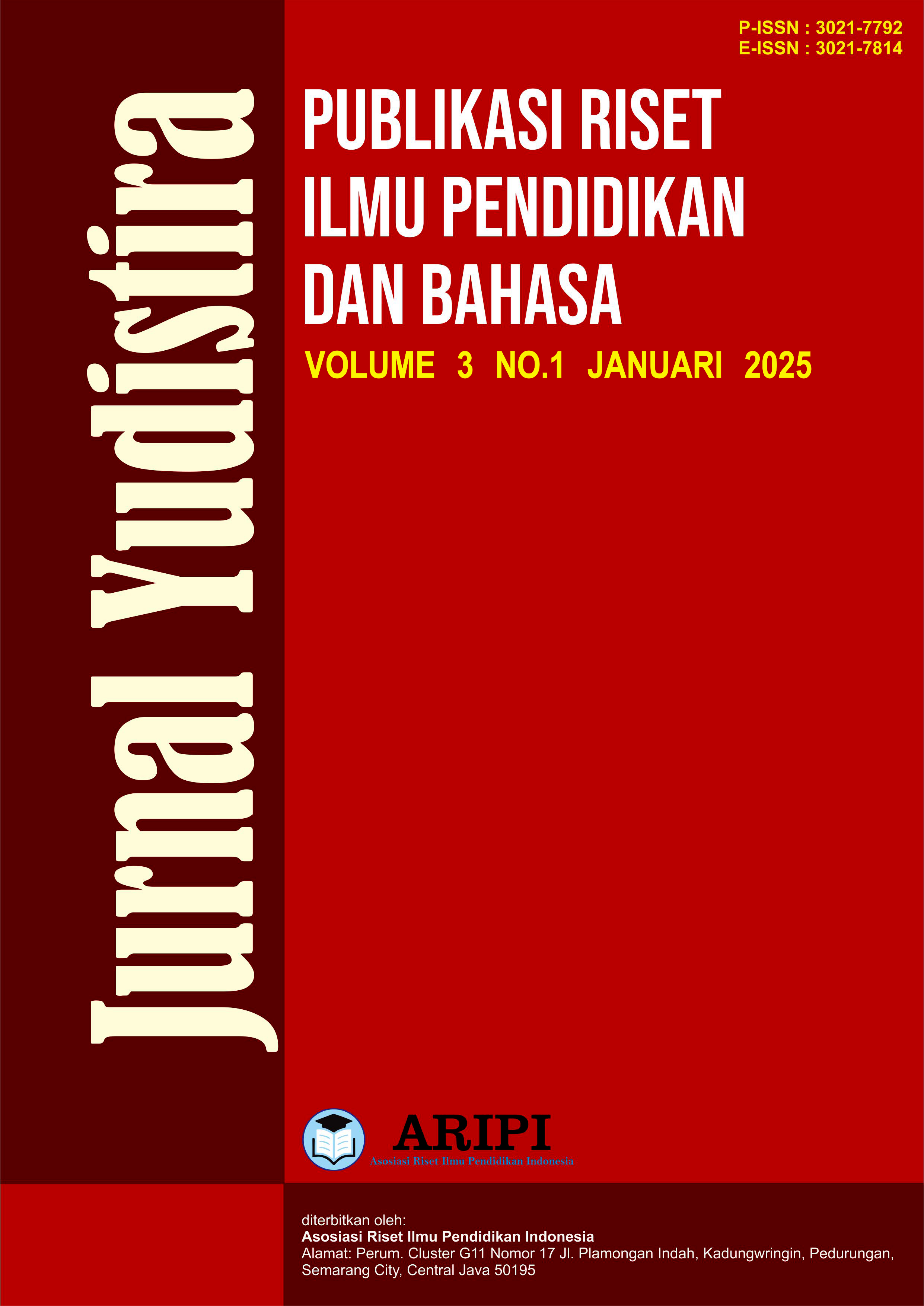Perkembangan Sistem Pendidikan di Mesir
DOI:
https://doi.org/10.61132/yudistira.v3i1.1414Keywords:
History, System, Education, ManagementAbstract
The aim of this research is to describe the development of the education system in Egypt. One very attractive educational option for Indonesian students in an Islamic country is education in Egypt. This can be seen from data from the Indonesian Embassy in Egypt, which records that around 8,000 Indonesian students are currently studying there. There are several reasons that cause this. Among them are (1) the quality education system at Al-Azhar, (2) the large number of talaqqi councils, (3) Egypt as the center of the Muslim community in the Middle East, (4) the land of the prophets, (5) affordable living costs, and (6) the many Islamic cultural sites that are often visited by foreign tourists. Another factor that makes education superior in Egypt is the cost of education which is covered by the government, which means education is free. Apart from that, the teaching staff at Al-Azhar are professionals, and the education system implemented is very good.
Downloads
References
Abdurrahmansyah. (2021). Perbandingan Pendidikan. Palembang: CV. Penerbit Anugrah Jaya.
Abou-Warda, S. H. (2015). Entrepreneurial orientation in business schools: A comparative study of higher education systems in Egypt. International Journal of Educational Management, 29(2), 192.
Ahmad, F., & Samsudin, D. (2017). Kebergantungan media sosial terhadap isu Arab.
Ananda, A. (2018). Perbandingan Sistem Pendidikan Antar Negara. IPPM Universitas Bung Hatta.
Azra, A. (1999). Pendidikan Islam: Tradisi dan Modernisasi Menuju Milenium Baru. Jakarta: Logos Wacana Ilmu.
Iddian, S. (2021). Sistem pendidikan di Mesir. Jurnal Pendidikan Islam Arriyadhah, 18(1), 34.
Ihsan, M. N. (2015). Perbandingan sistem pendidikan di tiga negara: Mesir, Iran, dan Turki. Jurnal Pendidikan Islam. https://doi.org/10.14421/jpi.2015.41.49-70
Murtadlo, M. (2018). Hubungan Mesir-Indonesia dalam modernisasi pendidikan Islam. Al-Qalam. https://doi.org/10.31969/alq.v24i2.530
Nasution, H. (1974). Pembaharuan dalam Islam: Sejarah Pemikiran dan Gerakan. Jakarta: Bulan Bintang.
Qolbiyah, A. (2022). Sistem pendidikan di Mesir. Jurnal Penelitian Ilmu Pendidikan Indonesia, 1(2), 32.
Rahman, A. A. (2003). Internasionalisasi Pendidikan: Sketsa Perbandingan Pendidikan di Negara-Negara Islam dan Barat. Yogyakarta: Gama Media.
Ramayulis. (1994). Pembaruan dalam Islam. Batusangkar: Fakultas Tarbiyah IAIN Imam Bonjol.
Ramayulis. (2012). Sejarah Pendidikan Islam. Jakarta: Kalam Mulia.
Saleh, M. N. I. (2015). Perbandingan sistem pendidikan di tiga negara: Mesir, Iran, dan Turki. Jurnal Pendidikan Islam, 4(1), 49–70.
Saudi, A. (2020). The strategies of developing pre-university education in Egypt in the light of the experiences of some foreign countries. International Journal of Research in Education Methodology, 1(1), 22.
Spring, S. N. A. (2017). Dalam kalangan khalayak di Malaysia. Jurnal Komunikasi: Malaysian Journal of Communication, 33(1).
Stopikowska, M., & El-Deabes, Y. M. (2012). The education system of Egypt: Contexts, frames and structures. Problems of Education in the 21st Century, 40.
Sukino, A. (2016). Dinamika pendidikan Islam di Mesir dan implikasinya terhadap transformasi keilmuan ulama Nusantara. Studia Didaktika, 10(1), 28.
Sulaiman. (2021). Sistem pendidikan Mesir dan perbandingannya dengan Indonesia. Jurnal Pendidikan Islam, 10(3), 401.
Supradi, B. (2021). Potret sistem pendidikan Islam di Mesir. Jurnal Tarbiyah, 10(2), 62.
Syah, N. A. (2002). Perbandingan Sistem Pendidikan 15 Negara. Bandung: Lubuk Agung.
Tambak, S. (2016). Eksistensi pendidikan Islam Al-Azhar: Sejarah sosial kelembagaan Al-Azhar dan pengaruhnya terhadap kemajuan pendidikan Islam era modernisasi di Mesir. Jurnal Al-Thariqah, 1(2), 129.
Yunitasari, D. (2017). Memetik pelajaran dari sistem pendidikan Mesir untuk Indonesia. Jurnal PKN dan Hukum.
Downloads
Published
How to Cite
Issue
Section
License
Copyright (c) 2024 Jurnal Yudistira : Publikasi Riset Ilmu Pendidikan dan Bahasa

This work is licensed under a Creative Commons Attribution-ShareAlike 4.0 International License.






